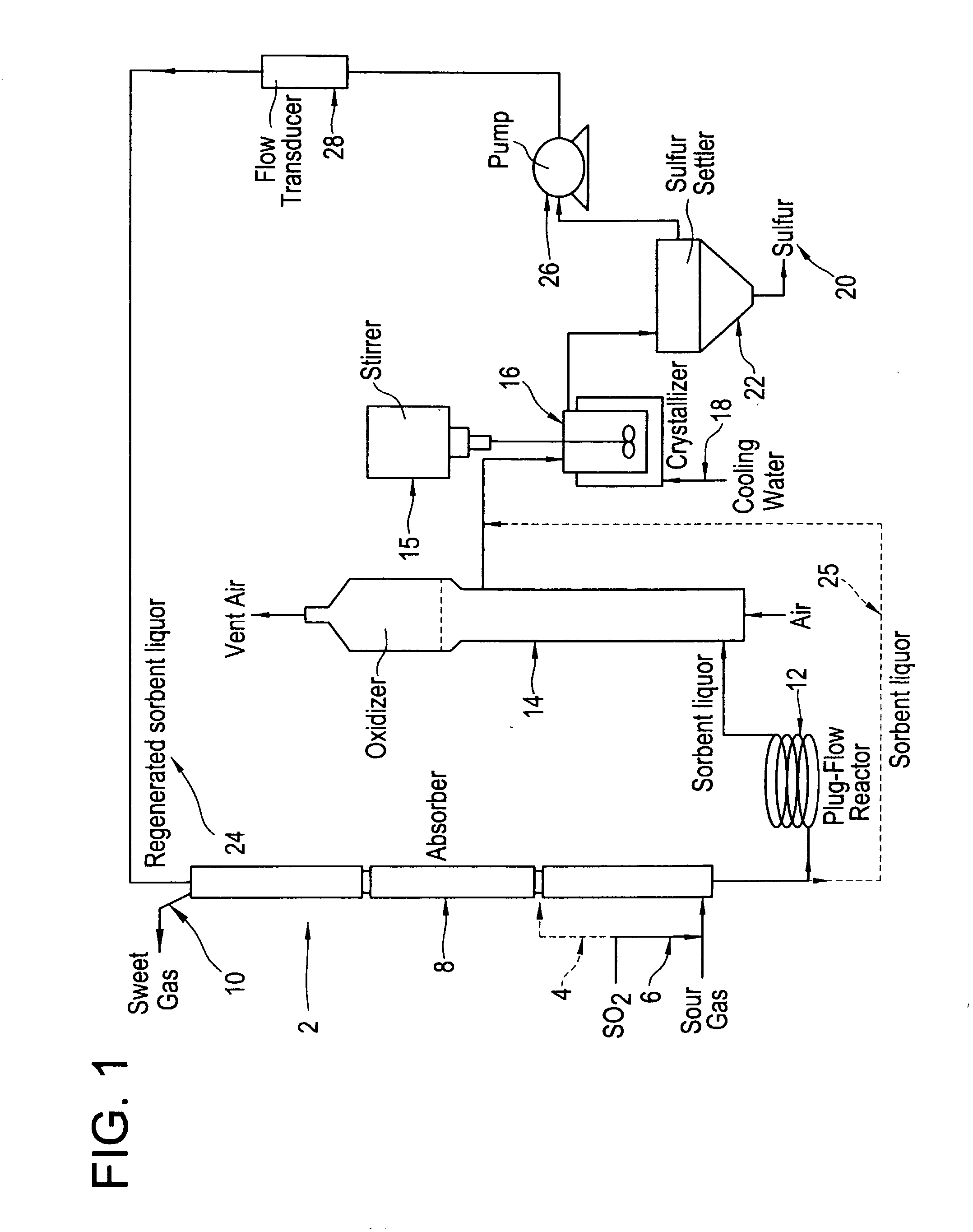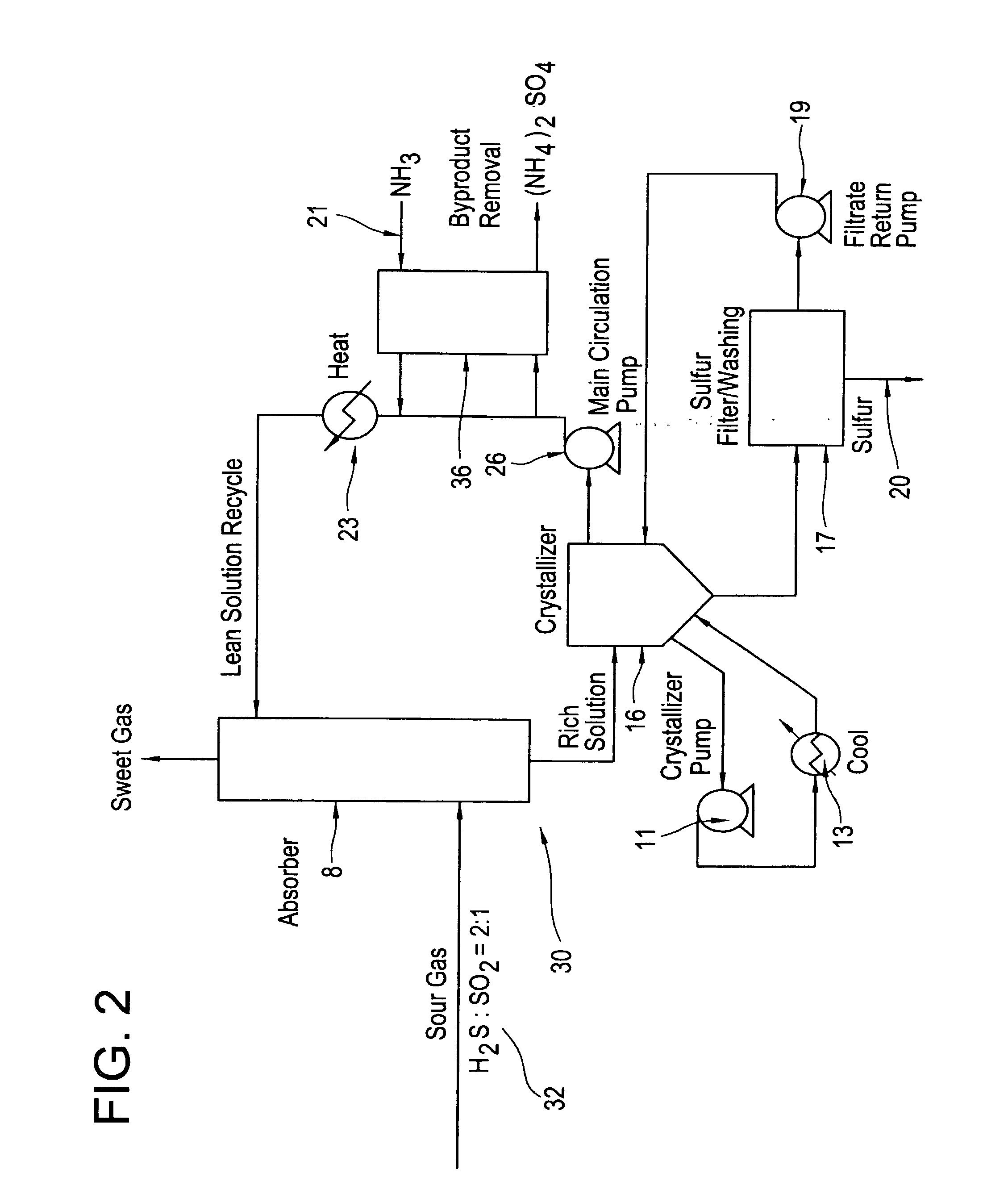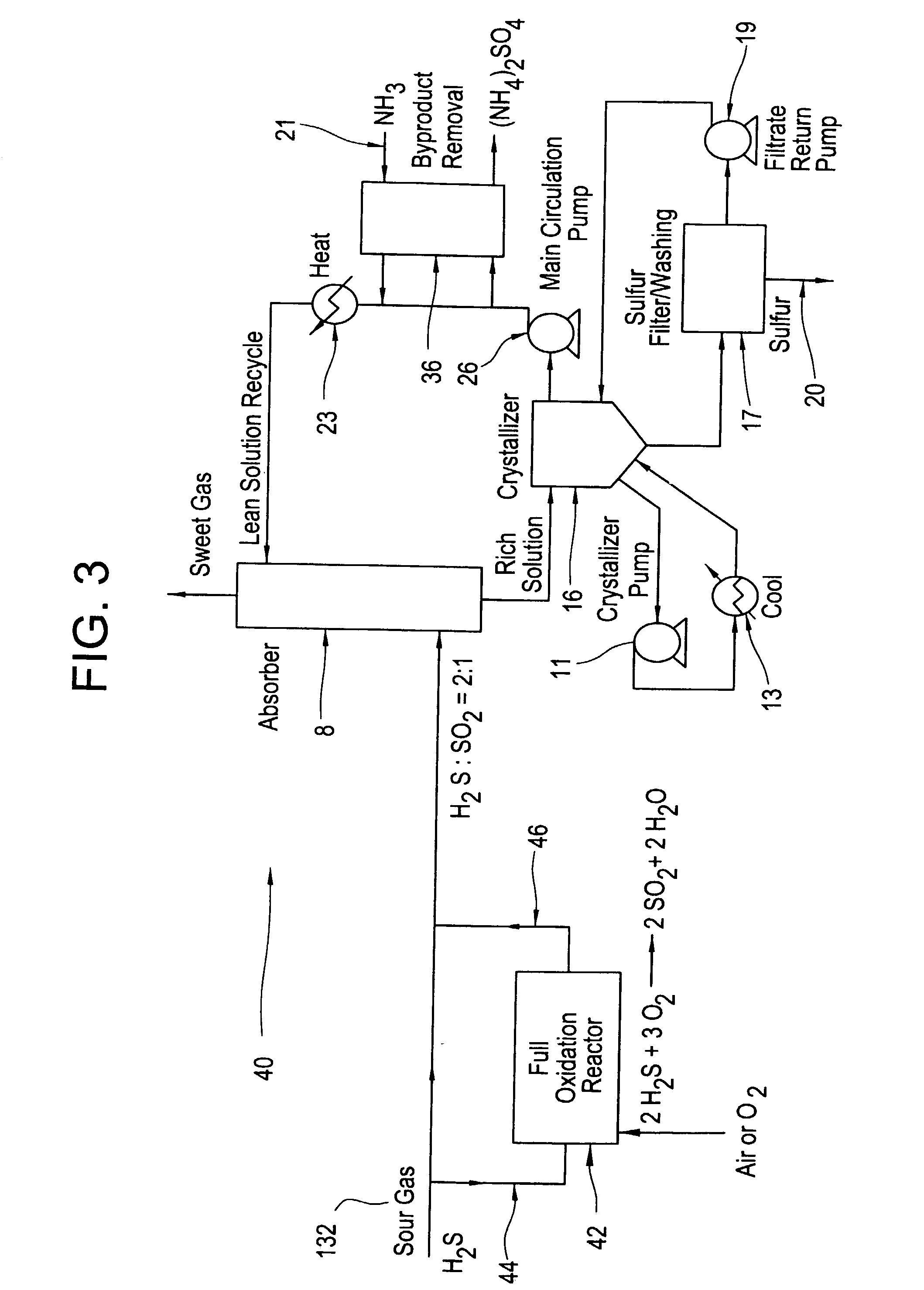Process for removing hydrogen sulfide from gas streams which include or are supplemented with sulfur dioxide, by scrubbing with a nonaqueous sorbent
a technology of hydrogen sulfide and gas stream, which is applied in the direction of hydrogen sulfide, sulfur preparation/purification, separation processes, etc., can solve the problems of sluggish sulfur formation kinetics, difficult separation and handling, and difficult to deal with solid sulfur products, etc., to achieve simple and inexpensive pumping methods.
- Summary
- Abstract
- Description
- Claims
- Application Information
AI Technical Summary
Benefits of technology
Problems solved by technology
Method used
Image
Examples
example 1
[0050] A long term (44 hour) run was done under typical SANS process operating conditions except with the addition of SO.sub.2. The average inlet H.sub.2S concentration was 32.9% and the average inlet SO.sub.2 concentration was 10%, producing a total S gas content of 42.9%. The total gas flow rate was 350 cc / min. The liquid flow rate was 55 cc / min, and the average liquid inventory was 4000 mL. These conditions were maintained for 44 hours, during which time the average H.sub.2S removal was 99.7%. This average removal is significantly better than that observed in a number of other runs done with 42.9% inlet H.sub.2S but no SO.sub.2, for which the usual average removal is about 95%. During this run the sulfur oxyanion byproduct make rate was 1.92% (total moles sulfur in oxyanion byproducts per mole sulfur absorbed). The major sulfur oxyanion was sulfate. No other peaks which could have indicated other anionic byproducts were seen in the ion chromatograms used to analyze for sulfate an...
example 2
[0052] For this run, the inlet concentration of H.sub.2S to the absorber was reduced from its normal value of 42.9% to 21.5% and the liquid flow rate was also reduced by approximately a factor of two from 55 cc / min to 25 cc / min, with no SO.sub.2 added to the system. This produced conditions in which the removal of H.sub.2S by the SANS sorbent is approaching equilibrium control and as a consequence the H.sub.2S removal was only 64%. At this point, adding 2.0% SO.sub.2 to the gas stream and maintaining the same total sulfur concentration in the gas produced an H.sub.2S removal of 72%. Similarly, adding 4.0% SO.sub.2 increased the H.sub.2S removal to 80%, and adding 6.0% SO.sub.2 gave a removal of 90% of the H.sub.2S. At this point, when the SO.sub.2 flow was turned off (without increasing the H.sub.2S inlet to compensate), the H.sub.2S removal decreased to a value of 59.4%, consistent with the low removal noted before starting SO.sub.2 flow, adjusted for the somewhat lower H.sub.2S co...
example 3
[0053] To determine if the direct reaction of H.sub.2S with SO.sub.2 occurs to an appreciable extent in this system, the bench scale unit was run under similar conditions to those in Example 2 except that the initial sorbent did not contain any elemental sulfur. At an average inlet H.sub.2S concentration of 22%, SO.sub.2 concentration of 6%, and liquid flow rate of 25 mL / min, the outlet H.sub.2S concentration was initially 10%, a removal of only 52%.
[0054] The removal improved somewhat with time, probably due to the formation of some elemental sulfur either by the direct reaction of H.sub.2S with SO.sub.2 or by air oxidation of sulfide in the oxidizer. Clearly, however, the direct reaction of H.sub.2S with SO.sub.2 is not as facile as the reaction mediated by elemental sulfur, which evidently proceeds via the intermediate polysulfide formed by reaction of H.sub.2S and S.sub.8 in solution.
PUM
| Property | Measurement | Unit |
|---|---|---|
| temperature | aaaaa | aaaaa |
| temperature | aaaaa | aaaaa |
| temperature | aaaaa | aaaaa |
Abstract
Description
Claims
Application Information
 Login to View More
Login to View More - Generate Ideas
- Intellectual Property
- Life Sciences
- Materials
- Tech Scout
- Unparalleled Data Quality
- Higher Quality Content
- 60% Fewer Hallucinations
Browse by: Latest US Patents, China's latest patents, Technical Efficacy Thesaurus, Application Domain, Technology Topic, Popular Technical Reports.
© 2025 PatSnap. All rights reserved.Legal|Privacy policy|Modern Slavery Act Transparency Statement|Sitemap|About US| Contact US: help@patsnap.com



